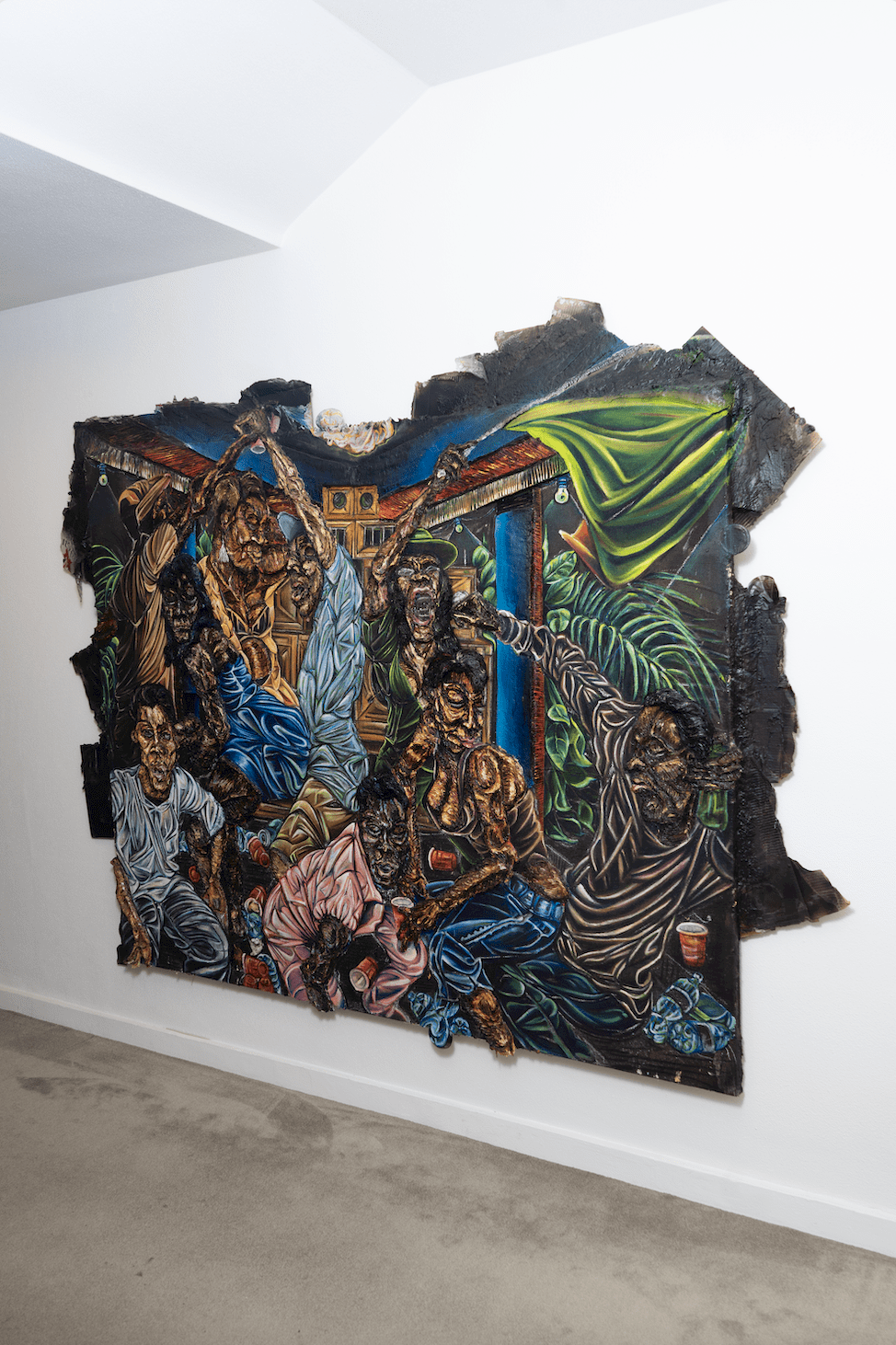

Raquel van Haver (b. 1989)
Change the rhythm of the dancehall... it’s still the same groove

The painting Change the rhythm of the dancehall… it’s still the same groove was part of one of the most talked-about exhibitions at the Stedelijk Museum in 2018: Spirits of the Soil by Raquel van Haver.
Prior to the exhibition, Van Haver travelled extensively through Africa, South America and the Caribbean. Her quest, far away from the Western 5-star hotels, takes her to the boroughs of the have-nots: the tough survivors, the hustlers, the hangers-on and the petty criminals. Due to her persistence and open mind, she manages to gain their trust and she gets a glimpse into the margins of society. People survive by alternately sharing their few possessions, or occasionally, by taking big risks to get hold of basic essentials.
To be completely honest, life seems to be quite fun on those fringes of society. They dance, drink, sing, flirt and eat together. There’s no lack of community and solidarity at first sight. Has Western society perhaps given up or lost something in our quest for prosperity and comfort?
The title of the painting Change the rhythm of the dancehall… it’s still the same groove refers to a constant in Van Haver’s travels and encounters: wherever she goes, she hears various types of Dancehall and Reggae music. The music characterises African migration patterns that can be traced all over the world. It’s a nice metaphor for the comings and goings of people who bring and leave behind a part of their identity. The materials used in the paintings of the Spirits of the Soil exhibition are always the same: burlap, tar, fake hair, gel, resin, chalk, charcoal, cigarette, ash, beer caps, beads, posters, telephones, homemade paint, cardboard and plastic. Like Dancehall and Reggae music, these are recurring elements that refer to the places she visited.
Accidentally, but not without satisfaction, through Spirits of the Soil Van Haver is now part of a heated conversation about the role of a museum for contemporary art in a 21st century multicultural society. The Stedelijk Museum (and indirectly also the artist) is criticised for selecting artists purely on the basis of background and skin colour. On the other hand, there are people who argue that museums are still far too uniformly “white and male” oriented. Like everyone else, Van Haver mainly wants to be judged on her painterly qualities. And no, the world she portrays is certainly not white.
There’s a timeframe of only just over six months between the Stedelijk Museum’s invitation to Van Haver and the opening of Spirits of the Soil. Van Haver spent long days in her studio, frantically working on her exhibition without taking breaks. In the meantime, she also won the Royal Award for Modern Painting (de Koninklijke Prijs voor de Vrije Schilderkunst). The fact that she managed to put together a very mature show, including seven larger-than-life paintings and a considerable number of photographic collages, in this short amount of time can safely be called a tour de force.